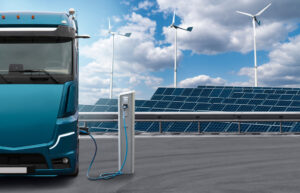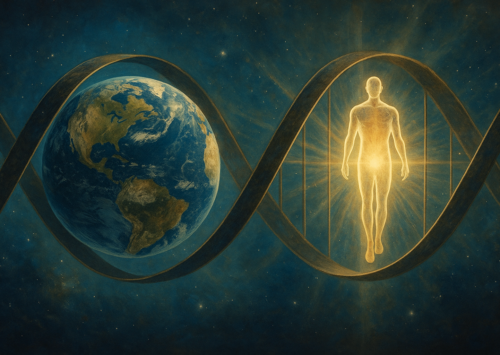
For those like us who have insisted for years on the need to bring the human being back to the center of the economic system and the dialogue between man and machine, the advent of Industry 5.0 offers numerous points for reflection and, why not, also the pleasant feeling of having glimpsed and believed, in the confused and turbulent contemporary chaos, in a future-oriented path suitable for the challenges of our time.
What is Industry 5.0
The key point to understand Industry 5.0 is that it is a philosophy or a business model characterized by Human Centricity, the human being at the center, which is one of the three pillars of the concept we have passionately spread for some time, Humanovability. Industry 5.0 is a Cooperative Industry, where the cooperation to be realized, and therefore carefully designed, is that between human and machine. A balance that brings countless advantages, first and foremost the ability to create products specifically tailored not only to the needs of consumers, but also of the environment and of those, human beings in fact, who work on their realization.
The European Union, in its paper “Industry 5.0: towards a sustainable, human-centric and resilient European industry” states that it will be able to “bring benefits to industry, workers and society.” Not a minor step, the one that led to the definition of a more holistic approach, more attentive to all the actors of the contemporary world.

It is the real element of discontinuity compared to Industry 4.0, which was strongly focused – and in many ways also crushed – by frantic innovation in sectors such as AI and robotics. If 4.0 accelerated technology, the historical rupture that characterizes every strongly innovative phase, 5.0 has the role of bringing a rebalancing which, today we can see more clearly even compared to just three or four years ago, society and individuals deeply and, I believe, no longer postponably need.
In this evolutionary model, priorities finally change somewhat. Where next-generation production platforms have brought advantages in terms of efficiency and profit, it is now necessary to harmonize them with the fundamental rights of workers. Where efficiency and profit have strengthened and made some business models more resilient, and in some cases even saved production realities from being annihilated by ongoing changes, the focus is now to assess their impact on society as a whole, in terms of sustainability, energy efficiency, and social and environmental consequences on territories or on the chains and supply networks that produce value.
Industry 5.0 meets the real need to be sustainable
It all sounds very “lofty,” very abstract from a certain point of view, but it is not at all. An AI or a robot can wipe out thousands of jobs and generate many more in a relatively short time, depending on the vision (or the lack of it) guiding their implementation as the new production standard. We are talking about incomes, families, men and women, projects and ambitions that are influenced by the production models existing in society.
We all now experience that feeling of emptiness and hollowness that comes from being obsessively exposed to mantras, fashionable and overused terms that claim to synthesize infinitely complex processes into lexical flashes that are understandable without particular effort. “Sustainability” is the buzzword of the moment, so forcibly inserted into every communicative register that in everyday perception it has almost completely lost its actual content value.

Industry 5.0 is not just a taxonomy, a label: it is the evolutionary synthesis of a model on which the future of hundreds of millions of human beings depends, and from the concept of “sustainability” it aims to draw proactively, declining its assumptions into thousands of work, production, and industrial practices. Within “sustainability” lies a great dream: that of terraforming the natural and human environment according to a new logic, more balanced than in the past. This is because we are slowly understanding that without adapting the concept of profit, sooner or later we are all in trouble.
The “old” profit lives on short terms, on visions of short or very short duration, of cashing in everything immediately without worrying too much about the scorched ground left behind. The profit that many of us have believed in for a long time – personally I have always called it Right Profit – lives in another dimension, in the medium and long term, embracing the effects of every human initiative on a broader scale than mere personal gain, that is, on a social and environmental level. That’s why the fact that Industry 5.0 is centered on the human being is a crucial step, without which we will undoubtedly have far fewer chances of overcoming the many crises marking this period.
An example of the new course: the Sure 5.0 project
Within the scope of this model falls the Sure5.0 project – “Supporting the SMEs SUstainability and REsilience transition towards industry 5.0 in the mobility, transport & automotive, aerospace and electronics European Ecosystems” – funded by the European Commission within the Horizon Programme Europe. The name says it all, in the sense that even the wording highlights the three strategic industrial ecosystems targeted by the project, namely mobility, aerospace and electronics.  11 partners from 8 European countries have joined forces to support about a thousand SMEs, therefore small and medium-sized enterprises, through funding for their Industry 5.0 projects, as well as networking opportunities, training and other tailor-made services. For a total mobilization of resources amounting to around 5 million euros. The underlying idea is that the development of Industry 5.0 goes through the creation of an ecosystem, and that it cannot be generated from scratch. A great effort of vision is needed to reconvert some production assumptions of the forces and players already on the chessboard. And if large companies promote this vision in concrete terms, supporting the transition of smaller companies in the same sector – therefore potential partners or suppliers – then the spread of the 5.0 ecosystem will occur more rapidly and in a way that is more aligned with the actual needs of the key players.
11 partners from 8 European countries have joined forces to support about a thousand SMEs, therefore small and medium-sized enterprises, through funding for their Industry 5.0 projects, as well as networking opportunities, training and other tailor-made services. For a total mobilization of resources amounting to around 5 million euros. The underlying idea is that the development of Industry 5.0 goes through the creation of an ecosystem, and that it cannot be generated from scratch. A great effort of vision is needed to reconvert some production assumptions of the forces and players already on the chessboard. And if large companies promote this vision in concrete terms, supporting the transition of smaller companies in the same sector – therefore potential partners or suppliers – then the spread of the 5.0 ecosystem will occur more rapidly and in a way that is more aligned with the actual needs of the key players.
One might object – and in my opinion it is right to do so – that the figures are drastically lower than the real needs for change. But charting a direction is a laborious process and we must avoid at all costs the trap: thinking that there are individual, massive world-changing and resolutive interventions. Instead, we must learn from the most virtuous implementations, take them as examples, replicate them in different areas and on increasingly larger scales and quality levels.
What we desperately need is a deep evolution. And evolution, by its very nature, cannot happen overnight.
Let me know if you’d like a version with stylistic adjustments for a publication or professional use.







